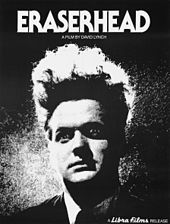
A cult film or cult movie, also commonly referred to as a cult classic, is a film that has acquired a cult following. Cult films are known for their dedicated, passionate fanbase, which forms an elaborate subculture, members of which engage in repeated viewings, dialogue-quoting, and audience participation. Inclusive definitions allow for major studio productions, especially box-office bombs, while exclusive definitions focus more on obscure, transgressive films shunned by the mainstream. The difficulty in defining the term and subjectivity of what qualifies as a cult film mirror classificatory disputes about art. The term cult film itself was first used in the 1970s to describe the culture that surrounded underground films and midnight movies, though cult was in common use in film analysis for decades prior to that.
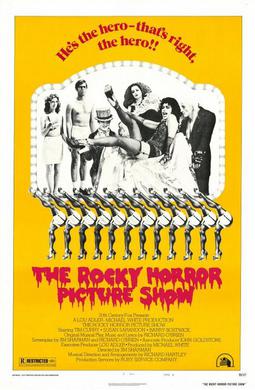
The Rocky Horror Picture Show is a 1975 independent musical comedy horror film produced by Lou Adler and Michael White, directed by Jim Sharman, and distributed by 20th Century Fox. The screenplay was written by Sharman and Richard O'Brien, who also played the supporting role Riff-raff. The film is based on the 1973 musical stage production The Rocky Horror Show, with music, book, and lyrics by O'Brien. The production is a tribute to the science fiction and horror B movies of the 1930s through to the early 1960s. The film stars Tim Curry, Susan Sarandon, and Barry Bostwick. The film is narrated by Charles Gray, with cast members from the original Royal Court Theatre, Roxy Theatre, and Belasco Theatre productions, including Nell Campbell and Patricia Quinn.
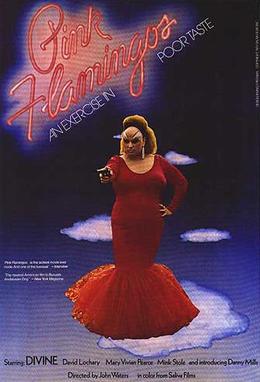
Pink Flamingos is a 1972 American black comedy film by John Waters. It is part of what Waters has labelled the "Trash Trilogy", which also includes Female Trouble (1974) and Desperate Living (1977). The film stars the countercultural drag queen Divine as a criminal living under the name of Babs Johnson, who is proud to be "the filthiest person alive". While living in a trailer with her mother Edie, son Crackers, and companion Cotton, Divine is confronted by the Marbles, a pair of criminals envious of her reputation who try to outdo her in filth. The characters engage in several grotesque, bizarre, and explicitly crude situations, and upon the film's re-release in 1997 it was rated NC-17 by the MPAA "for a wide range of perversions in explicit detail". It was filmed in the vicinity of Baltimore, Maryland, where Waters and most of the cast and crew grew up.

Cassandra Gay Peterson is an American actress best known for her portrayal of the horror hostess character Elvira, Mistress of the Dark. Peterson gained fame on Los Angeles television station KHJ-TV in her stage persona as Elvira, hosting Elvira's Movie Macabre, a weekly B movie presentation. A member of the Los Angeles-based improvisational and sketch comedy troupe The Groundlings, Peterson based her Elvira persona in part on a "Valley girl"-type character she created while a member of the troupe.

The double feature is a motion picture industry phenomenon in which theatres would exhibit two films for the price of one, supplanting an earlier format in which the presentation of one feature film would be followed by various short subject reels.
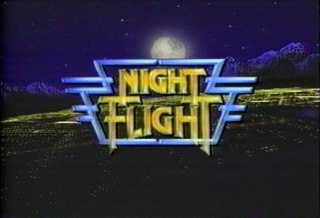
Night Flight is an online visual-arts magazine and variety television show that originated on cable TV network USA Network. It originally aired from 1981 to 1988 before moving to syndication in the early 1990s. The show relaunched online on nightflight.com in 2015 with original episodes that can be streamed on the subscription channel Night Flight Plus. In April 2018, it returned to cable television as a short form (15-minute) program airing late Friday nights/early Saturday mornings on the network IFC. It includes a mix of mainstream and alternative music videos, artist interviews, B movies, documentaries, short films, stand-up comedy and animation.

Midnight Movies: From the Margin to the Mainstream is a 2005 documentary film written and directed by Stuart Samuels, based on his book on the subject.

Elvira: Mistress of the Dark is a 1988 American comedy horror film directed by James Signorelli, starring Cassandra Peterson as eccentric horror host Elvira. The film's screenplay, written by Peterson, John Paragon, and Sam Egan, follows Elvira inheriting a house nestled in the heart of an overtly prudish community.
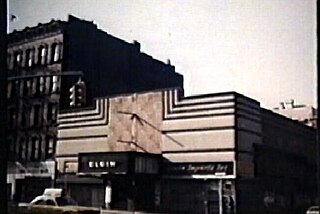
The Elgin Theater is a former movie theater on the corner of 19th Street and Eighth Avenue in the Chelsea neighborhood of Manhattan in New York City. The theater showed films from its opening in 1942 until 1978. Its longtime manager, Ben Barenholtz, invented midnight movie programming for the theater. Following a full renovation, the building reopened in 1982 as a 472-seat dance theater operated by the Joyce Theatre Foundation.

"Science Fiction/Double Feature" is the opening song to the original 1973 musical stage production, The Rocky Horror Show as well as its 1975 film counterpart The Rocky Horror Picture Show, book, music and lyrics by Richard O'Brien, musical arrangements by Richard Hartley. The song is reprised at the end of the show, with lyrics that reflect on the final events of the story.

Peaches Christ is an American underground drag performer, emcee, filmmaker, and actor. Peaches currently resides in San Francisco where her Backlash Production Company and Midnight Mass movie series are based. Grannell studied film at Penn State University, where his senior thesis film Jizzmopper: A Love Story, about a janitor at an adult video store, won the audience award at the annual Penn State Student Film Festival. Grannell developed the Peaches Christ character during the production of this film.
Fright Night was the name of two science fiction and horror film programs. One ran from 1970 to 1981, and the other ran from 1973 to 1987. Both programs were broadcast by KHJ-TV Los Angeles, and its sister-station WOR-TV New York City.
The Rocky Horror Picture Show cult following is the cultural phenomenon surrounding the large fan base of enthusiastic participants of the movie The Rocky Horror Picture Show, generally credited as being the best-known cinematic "midnight movie".
"Dammit Janet" is a song/musical number in the original 1973 British musical stage production, The Rocky Horror Show as well as its 1975 film counterpart The Rocky Horror Picture Show, book, music and lyrics by Richard O'Brien, musical arrangements by Richard Hartley.

Elvira's Movie Macabre, or simply Movie Macabre, is an American hosted horror movie television program that originally aired locally from 1981 to 1986. The show features B movies, particularly those in the horror and science fiction genres, and is hosted by Elvira, a character with a black dress and heaven bump hairstyle, played by Cassandra Peterson. Elvira occasionally interrupts the films with comments and jokes, and in some episodes receives phone calls from a character called "the Breather".
Ben Barenholtz was a Polish-born American film producer, exhibitor, and distributor with a significant presence in the independent film scene since the late 1960s. In 1968 Barenholtz opened The Elgin Cinema in New York City which was known for its experimental midnight screenings of new filmmakers.

The Tiffany Theater was the first theater on the Sunset Strip in West Hollywood, California. It stood west of La Cienega between the Playboy Club and Dino's Lodge restaurant. Before being converted from the Mary Webb Davis Modeling School office at 8532 W. Sunset Blvd to a movie theater, the building had been seen in the 1958–1964 television series 77 Sunset Strip as the office for detectives Efrem Zimbalist, Jr., Roger Smith, and Edd Byrnes.

Eraserhead is a 1977 American independent surrealist body horror film written, directed, produced, and edited by David Lynch. Lynch also created its score and sound design, which included pieces by a variety of other musicians. Shot in black and white, it was Lynch's first feature-length effort following several short films. Starring Jack Nance, Charlotte Stewart, Jeanne Bates, Judith Anna Roberts, Laurel Near, and Jack Fisk, it tells the story of a man (Nance) who is left to care for his grossly deformed child in a desolate industrial landscape.
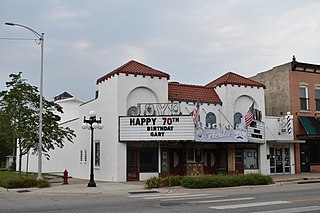
The Joyo Theater is a historic theater in Lincoln, Nebraska. It is a single-screen movie theater adapted to also host acts on stage such as musicians and movies with a stage-show component. Constructed in 1926 as the New Lyric Theatre, the marquee and ticket booth date from the 1930s.
Midnight ghost shows were traveling stage shows that originated in the United States during the Great Depression. The shows were influenced by the stage magic traditions that preceded them, and typically incorporated illusions; simulated séances; interactivity between a host—often called a "ghostmaster"—or performers and the audience; a "blackout" sequence in which the theater would go completely dark; and horror film screenings before or after the show.



